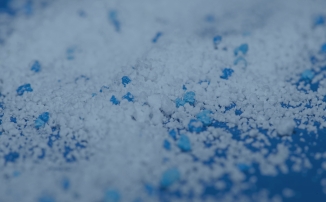
Upstream authorisation dossiers: analysis of alternative plans confirm difficulties
ECHA, and more specifically the Socio-Economic Analysis Committee (SEAC), was asked to analyse substitution plans provided by applicants for authorisation, which concern in particular the use of hexavalent chromium in surface treatment, but also the hardener MOCA.
The draft SEAC opinion presented to MOCA's "upstream" applicants at the end of March would cast doubt on the credibility of the substitution plan which covers application sectors as varied as aeronautics, automobiles, ceramics, the paper industry, steel, aluminium, etc.
No information has yet emerged on SEAC's analysis of the substitution plan submitted by CTACSub applicants for the use of decorative chromium, which also covers a wide range of sectors, and which is obviously eagerly awaited by many chromium producers across Europe.
SEAC's final opinion on the substitution plan submitted for the upstream MOCA application, as well as that for the decorative chrome use of CTACSub is expected in June this year. The European Commission's decision on these applications is expected in January 2022.
CTACSub: complicated authorisation dossiers
The CTACSub consortium's application for authorisation was originally submitted in 2015 for six different uses of chromium trioxide. This application is referred to as an upstream authorisation dossier. This means that these dossiers cover all downstream users in the supply chain.
Five of the six applications for chromium VI were validated last December, but application No. 3, functional chromium plating for decorative purposes, is still awaiting a decision. At the request of the European Commission, the consortium has therefore submitted a substitution plan, which confirms the difficulties linked to the upstream dossiers.
Upstream authorisation dossiers: analysis of alternative plans confirm difficulties
ECHA, and more specifically the Socio-Economic Analysis Committee (SEAC), was asked to analyse substitution plans provided by applicants for authorisation, which concern in particular the use of hexavalent chromium in surface treatment, but also the hardener MOCA.
The draft SEAC opinion presented to MOCA's "upstream" applicants at the end of March would cast doubt on the credibility of the substitution plan which covers application sectors as varied as aeronautics, automobiles, ceramics, the paper industry, steel, aluminium, etc.
No information has yet emerged on SEAC's analysis of the substitution plan submitted by CTACSub applicants for the use of decorative chromium, which also covers a wide range of sectors, and which is obviously eagerly awaited by many chromium producers across Europe.
SEAC's final opinion on the substitution plan submitted for the upstream MOCA application, as well as that for the decorative chrome use of CTACSub is expected in June this year. The European Commission's decision on these applications is expected in January 2022.
CTACSub: complicated authorisation dossiers
The CTACSub consortium's application for authorisation was originally submitted in 2015 for six different uses of chromium trioxide. This application is referred to as an upstream authorisation dossier. This means that these dossiers cover all downstream users in the supply chain.
Five of the six applications for chromium VI were validated last December, but application No. 3, functional chromium plating for decorative purposes, is still awaiting a decision. At the request of the European Commission, the consortium has therefore submitted a substitution plan, which confirms the difficulties linked to the upstream dossiers.







